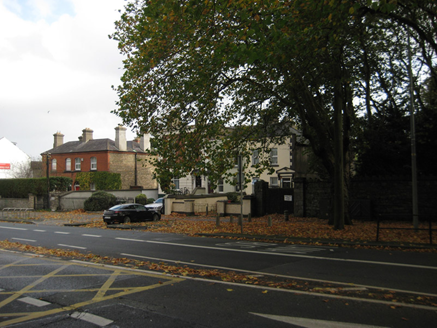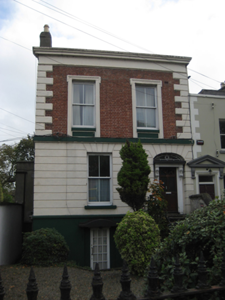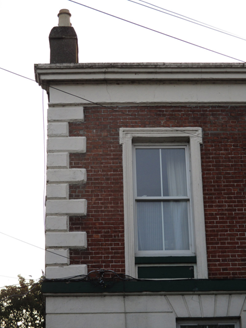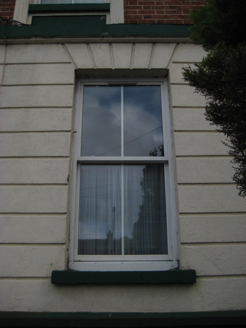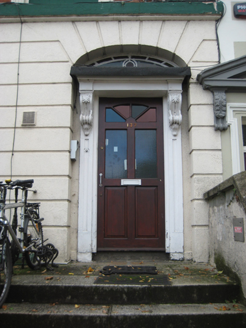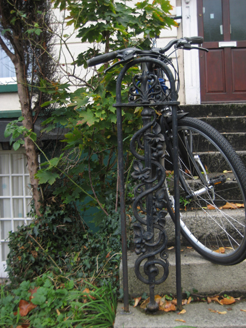Survey Data
Reg No
50120170
Rating
Regional
Categories of Special Interest
Architectural, Artistic
Original Use
House
In Use As
Apartment/flat (converted)
Date
1800 - 1840
Coordinates
316213, 236591
Date Recorded
17/10/2017
Date Updated
--/--/--
Description
Attached two-bay two-storey former house over raised basement, built c. 1820, attached to earlier pair of houses and having two-storey flat-roofed return to rear. Now in use as apartments. M-profile pitched slate roof, partly hidden behind parapet with moulded render cornice and frieze, and having rendered chimneystacks to gable wall with some clay pots. Front elevation has red brick walling to first floor, laid in Flemish bond, with rendered quoins, over render stringcourse to ground floor, latter having channelled rendered walling on granite stringcourse, over rendered basement walling; rendered walls to rear and north elevation. Square-headed window openings with cut granite sills, having moulded lugged render surrounds to first floor, and replacement uPVC windows throughout. Elliptical-headed doorway with timber doorcase comprising panelled pilasters, scrolled foliate console brackets supporting stepped cornice, replacement door and early spoked fanlight. Entrance approached by flight of eight cut granite steps, platform having cast-iron coal-hole cover and ornate cast-iron bootscrape; cast-iron railings with wrought-iron handrail to north side and shared rendered wall to south. Garden to front, bounded to footpath by decorative cast-iron railings with arrowhead finials, set on carved granite plinth, with matching gate. Garden to rear.
Appraisal
This house retains much of its early form and character, which is enhanced by the asymmetric openings and the contrasting materials used on the front elevation. Early fabric remains in the brickwork, cast-iron railings and doorcase and fanlight. Its front garden boundaries remain intact, helping to maintain the early suburban character of the streetscape. The building is situated at the bottom of the hill, Droim Conrach, that gives the area its name.
